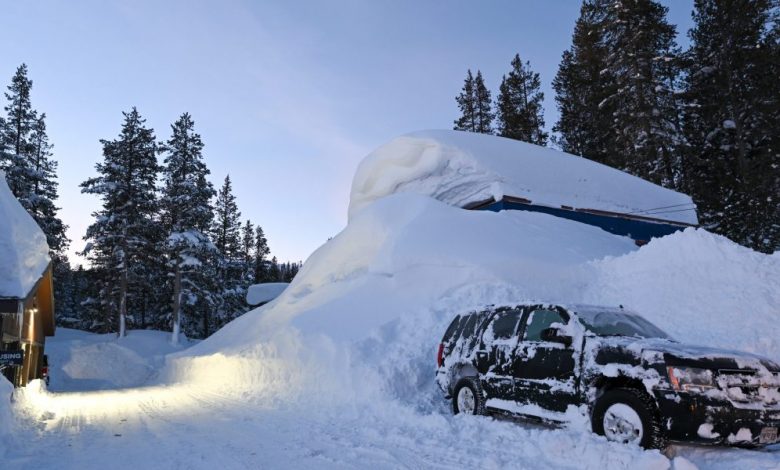California’s drought is over after epic rain and snowfall for half the state

Torrential rainfall and snowfall since late last year has lifted half of California from drought, but low groundwater levels remain an ongoing problem, US drought monitor data showed on Thursday.
The latest survey found that about 49% of the state is experiencing moderate or severe drought, and nearly 17% of the state is free of drought or a condition described as unusually dry. The rest is still unusually dry.
“Clearly, the amount of water that has fallen this year has mitigated the drought,” said Daniel Swain, a climate scientist at the University of California, Los Angeles. “It hasn’t completely ended the drought, but we’re in a very different place than we were a year ago.”
California’s most recent drought began in 2020, and there was no relief in sight heading into this winter.
Three months ago drought hit virtually all of California, including extreme and extraordinary proportions. Water agencies serving millions of people, agriculture and industry have been told to expect only a fraction of the requested allocations.
The turnaround began with a series of atmospheric flows that flooded the state from late December to mid-January, forming a huge blanket of snow in the Sierra Nevada, causing flooding, downing trees and battering the coast with extreme surf.
Water boards began increasing allocations, and after a few largely dry weeks, powerful arctic-air storms returned in February, creating epic vistas of white-capped mountains while highways and ski resorts were closed and communities buried with enough snow to collapse roofs.
The monitor shows three regions have benefited the most from abundant rainfall, including snowfall measured in feet, not inches.
The central sierra and foothills are now free of drought or unusual dryness for the first time since January 2020, the monitor said. The central coast from Monterey Bay to Los Angeles County is also now drought-free, along with two counties on the far north coast.
“The rain has improved soil moisture and water flow in California, while the snow has increased snow cover in the mountains well above normal levels,” the monitor said. “Most of California’s reservoirs have refilled with water levels near or above average, but water tables remain low and may take months to recover.”
As of Thursday, the water content of the Sierra snowpack, which provides about a third of California’s water, was 170% of the historical average on April 1, when it normally peaks, according to the state Department of Water Resources.
Department officials plan to conduct a snow survey in Sierra on Friday and hold a briefing on how the remaining month of California’s traditional snow season will affect the state’s water supply.
Swain said the snowpack could be the largest ever seen in parts of California. The outlook calls for a sustained wet pattern, particularly for the northern parts of the state, and more feet of snow, he said.
“If we can get through the rest of the season with no more roof collapses or snowmelt flooding, that’s a real blessing,” Swain said.
The snowpack could potentially face threats such as early heat waves or, as some forecast models have suggested, warm atmospheric flow that could cause melting and flooding. Swain said California is expected to remain cold and the likelihood of atmospheric flow is very low.
“I think the snowpack is going to take all summer to melt and … some shady patches might still be there next fall,” he said.
While reservoirs filled from appallingly low levels, reclamation has not been uniform, as shown by the state’s two largest reservoirs. Lake Oroville, 65 miles (105 kilometers) north of Sacramento, is at 73% occupancy, 116% of the previous average. Another 90 miles (145 kilometers) north, Lake Shasta is only 60% full, 84% of the previous average.
Swain said he expects Shasta to receive good inflows during the snowmelt season as snowpack there is slightly above average, if not exceptional.
The US Drought Monitor is a collaborative effort of the University of Nebraska-Lincoln National Drought Mitigation Center, the National Oceanic and Atmospheric Administration, and the US Department of Agriculture.
Learn how to navigate and build trust in your organization with The Trust Factor, a weekly newsletter exploring what leaders need to succeed. Login here.



